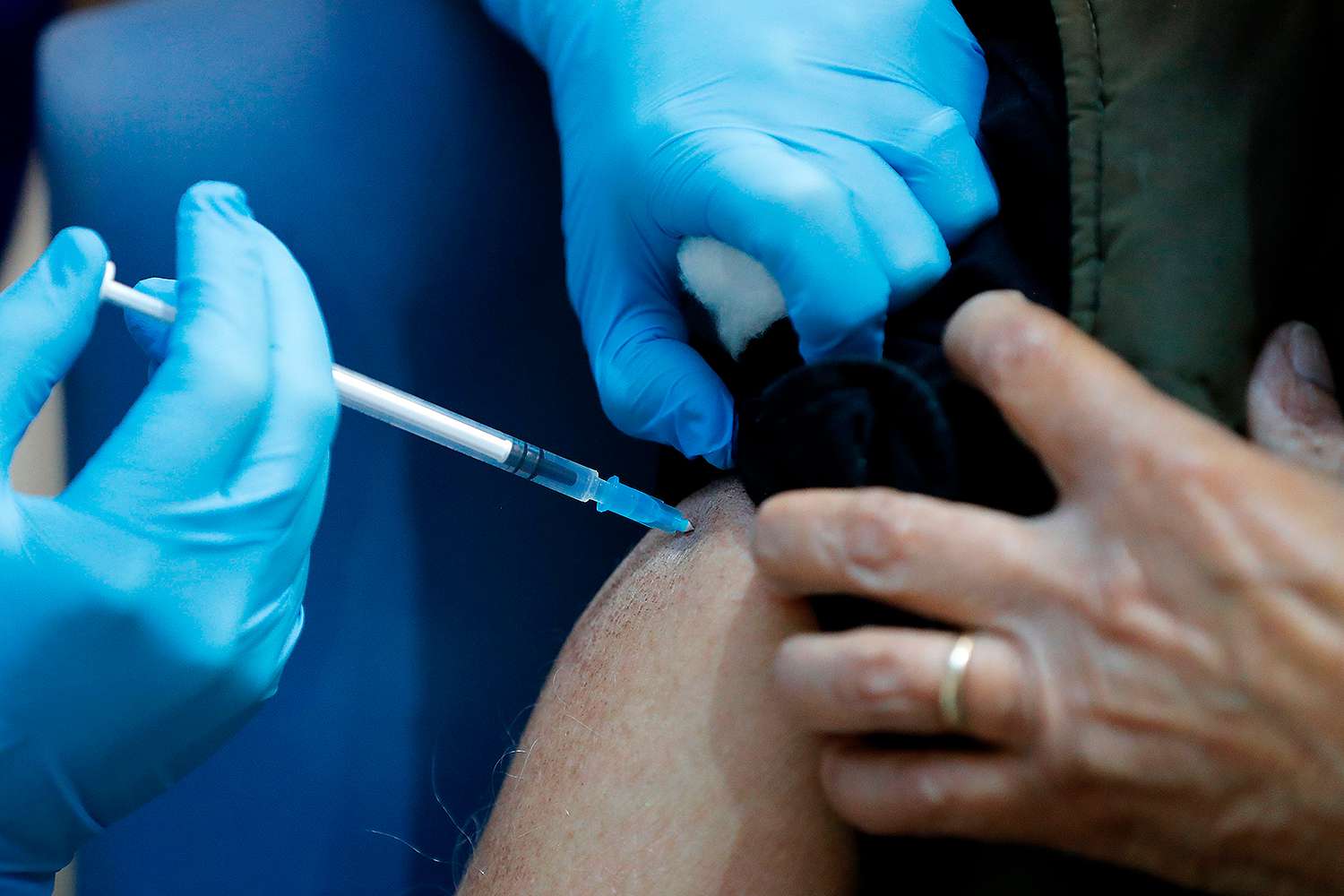
As 2020 comes to an end, only around 2.7 million Americans have received their first dose of the coronavirus vaccine — a much lower number than the 20 million the federal government originally promised.
Nationwide distribution began on Dec. 14 after the Food and Drug Administration approved two vaccine candidates, one from Pfizer and another from Moderna. Frontline healthcare workers were the first to receive a dose, with an ICU nurse at Long Island Jewish Medical Center taking the historic first inoculation.
According to data from the Centers for Disease Control and Prevention, the United States has sent out 12.4 million doses as of Wednesday. But only 2.7 million people have reportedly received the shot. While government officials say there is a delay in reporting, the low number of vaccinations leaves the nation far behind in protecting vulnerable Americans.
"We know it should be better, and we are working hard to make it better," Moncef Slaoui, the chief adviser to the federal vaccine effort, said in a press conference Wednesday.
According to the New York Times, government officials aren't sure what is causing the delay but blame a variety of factors — including the holiday season, as many people take off from work and clinics reduce their hours.
Additionally, public health experts told the outlet that the federal government left local health officials and hospitals to sort out the complex details of the vaccine distribution process. Many of these healthcare workers and facilities are long overworked amid the pandemic.
"We’ve taken the people with the least amount of resources and capacity and asked them to do the hardest part of the vaccination — which is actually getting the vaccines administered into people’s arms," Dr. Ashish Jha, the dean of Brown University’s School of Public Health, told the Times.

Never miss a story — sign up for PEOPLE's free daily newsletter to stay up-to-date on the best of what PEOPLE has to offer, from juicy celebrity news to compelling human interest stories.
Meanwhile, President Donald Trump and officials behind Operation Warp Speed deny that they are to blame for the lag in distribution.
"It is up to the States to distribute the vaccines once brought to the designated areas by the Federal Government," Trump tweeted on Tuesday. "We have not only developed the vaccines, including putting up money to move the process along quickly, but gotten them to the states."
U.S. Army Gen. Gustave F. Perna, chief operating officer of Operation Warp Speed, said on Wednesday that they expect the rollout to continue, adding that they expect access to vaccines to greatly increase between Jan. 8 and Jan. 15, NPR reported.
Dr. Anthony Fauci spoke candidly on Tuesday about whether or not Americans should have confidence that the current plan in place will work.
"Well, we have to see," he said while appearing virtually on CNN's New Day. "As not being responsible myself for the rollout, I can't personally guarantee that we're gonna catch up."
"I hope we do," he continued. "The people who are responsible for it, are really on it. The question is: Are they going to be able to get back to the pace that we set early on? And again, I hope we can."
As of Thursday, over 19,795,400 people in the U.S. have been infected with COVID-19 and at least 342,577 have died, according to a New York Times database.
As information about the coronavirus pandemic rapidly changes, PEOPLE is committed to providing the most recent data in our coverage. Some of the information in this story may have changed after publication. For the latest on COVID-19, readers are encouraged to use online resources from the CDC, WHO and local public health departments. PEOPLE has partnered with GoFundMe to raise money for the COVID-19 Relief Fund, a GoFundMe.org fundraiser to support everything from frontline responders to families in need, as well as organizations helping communities. For more information or to donate, click here.
Source: Read Full Article
